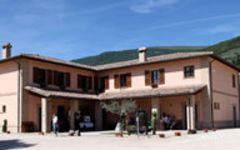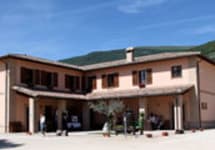Sportoletti Villa Fidelia Rosso 1999
-
Robert
Parker


Product Details
Your Rating
Somm Note
Winemaker Notes
Professional Ratings
-
Robert Parker's Wine Advocate
Sportoletti's compelling, unfiltered 1999 Villa Fidelia (a 1,400 case cuvee made from 70% Merlot, 20% Cabernet Sauvignon, and 10% Cabernet Franc) is undoubtedly the super-star of this area. Its dense ruby/purple color is accompanied by gorgeous aromas of blackberries, cassis, espresso, chocolate, and a touch of smoke. There is fabulous concentration, full body, great precision as well as purity, and a long, 45-second finish. Displaying an overall sense of elegance and gracefulness despite its depth and richness, this prodigious effort can be drunk now and over the next 14 years.
Other Vintages
2016- Vinous
-
Robert
Parker
-
Robert
Parker -
Wine
Spectator
-
Robert
Parker


Today the company owns 50 acres of vines all situated in the hills of Assisi and Spello, an area highly regarded for its climate and for its association with the Denominazione di Origine Controllata of Assisi.
Recently, Sportoletti went through a process of renewing the vines with new grape clones of Grechetto and Chardonnay, Sauvignon Blanc, Merlot, Cabernet Sauvignon and Pinot Nero which is showing very promising results in Italian Oenology.
The vines are followed very attentively up to their harvest, when the grapes are handpicked. The same care is taken in the cellar where the vinification takes place utilizing an air press for a soft pressing. Vinification is carried out in temperature controlled stainless steel tanks and the best reds are refined in French oak. In the last few years the prominent enologist Riccardo Cotarella has consulted with the winery.
The Sportoletti brothers also own 3,000 olive trees on land that is 1,600 feet in altitude, on the slope of the Monte Subasio.

With hundreds of red grape varieties to choose from, winemakers have the freedom to create a virtually endless assortment of blended red wines. In many European regions, strict laws are in place determining the set of varieties that may be used, but in the New World, experimentation is permitted and encouraged resulting in a wide variety of red wine styles. Blending can be utilized to enhance balance or create complexity, lending different layers of flavors and aromas. For example, a red wine blend variety that creates a fruity and full-bodied wine would do well combined with one that is naturally high in acidity and tannins. Sometimes small amounts of a particular variety are added to boost color or aromatics. Blending can take place before or after fermentation, with the latter, more popular option giving more control to the winemaker over the final qualities of the wine.
How to Serve Red Wine
A common piece of advice is to serve red wine at “room temperature,” but this suggestion is imprecise. After all, room temperature in January is likely to be quite different than in August, even considering the possible effect of central heating and air conditioning systems. The proper temperature to aim for is 55° F to 60° F for lighter-bodied reds and 60° F to 65° F for fuller-bodied wines.
How Long Does Red Wine Last?
Once opened and re-corked, a bottle stored in a cool, dark environment (like your fridge) will stay fresh and nicely drinkable for a day or two. There are products available that can extend that period by a couple of days. As for unopened bottles, optimal storage means keeping them on their sides in a moderately humid environment at about 57° F. Red wines stored in this manner will stay good – and possibly improve – for anywhere from one year to multiple decades. Assessing how long to hold on to a bottle is a complicated science. If you are planning long-term storage of your reds, seek the advice of a wine professional.

Centered upon the lush Apennine Range in the center if the Italian peninsula, Umbria is one of the few completely landlocked regions in Italy. It’s star red grape variety, Sagrantino, finds its mecca around the striking, hilltop village of Montefalco. The resulting wine, Sagrantino di Montefalco, is an age-worthy, brawny, brambly red, bursting with jammy, blackberry fruit and earthy, pine forest aromas. By law this classified wine has to be aged over three years before it can be released from the winery and Sagrantino often needs a good 5-10 more years in bottle before it reaches its peak. Incidentally these wines often fall under the radar in the scene of high-end, age-begging, Italian reds, giving them an almost cult-classic appeal. They are undoubtedly worth the wait!
Rosso di Montefalco, on the other had, is composed mainly of Sangiovese and is a more fruit-driven, quaffable wine to enjoy while waiting for the Sagrantinos to mellow out.
Among its green mountains, perched upon a high cliff in the province of Terni, sits the town of Orvieto. Orvieto, the wine, is a blend of at least 60% Trebbiano in combination with Grechetto, with the possible addition of other local white varieties. Orvieto is the center of Umbria’s white wine production—and anchor of the region’s entire wine scene—producing over two thirds of Umbria’s wine. A great Orvieto will have clean aromas and flavors of green apple, melon and citrus, and have a crisp, mineral-dominant finish.
